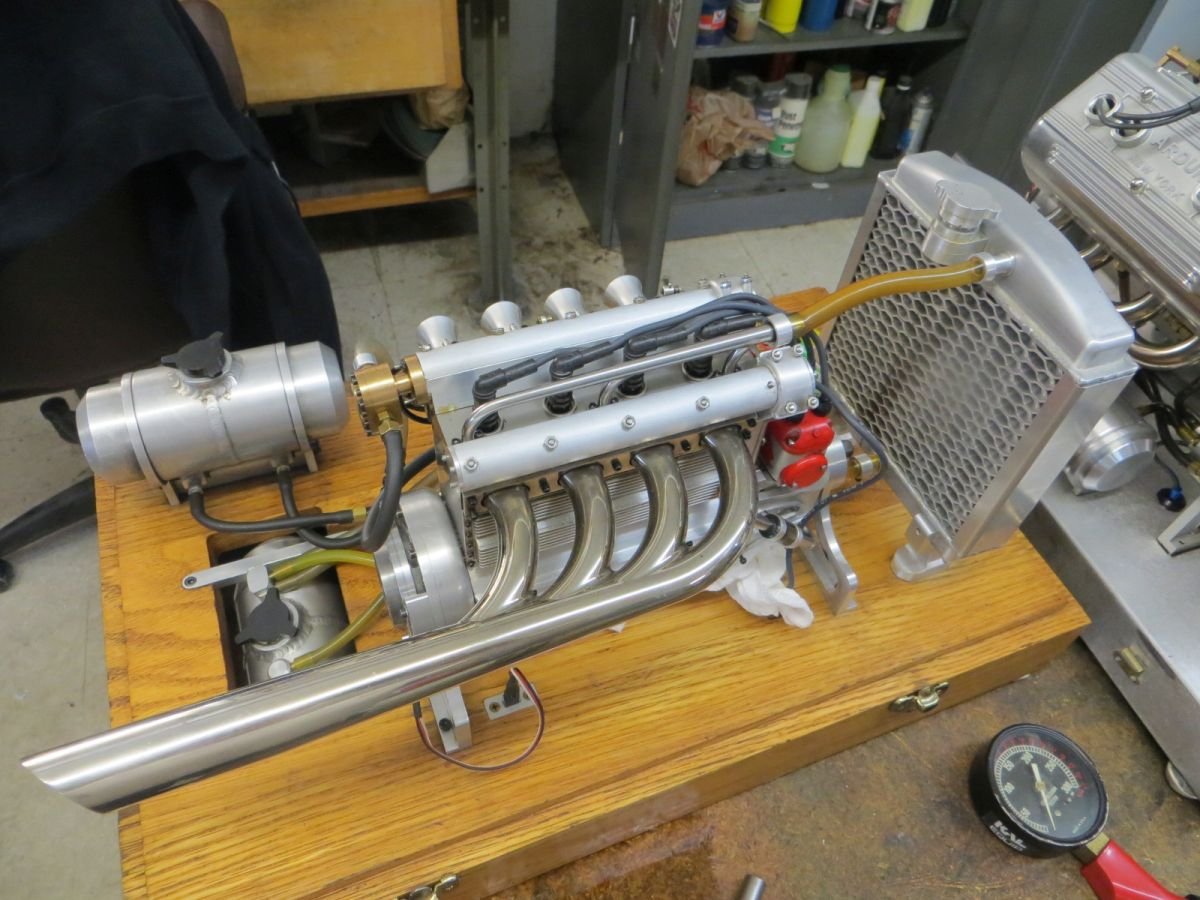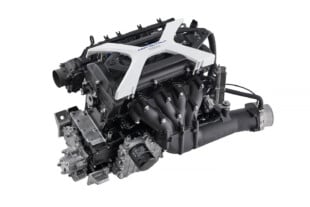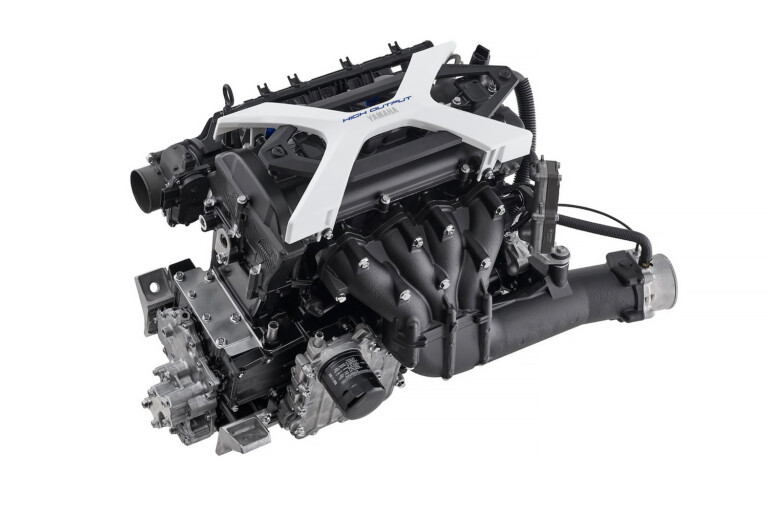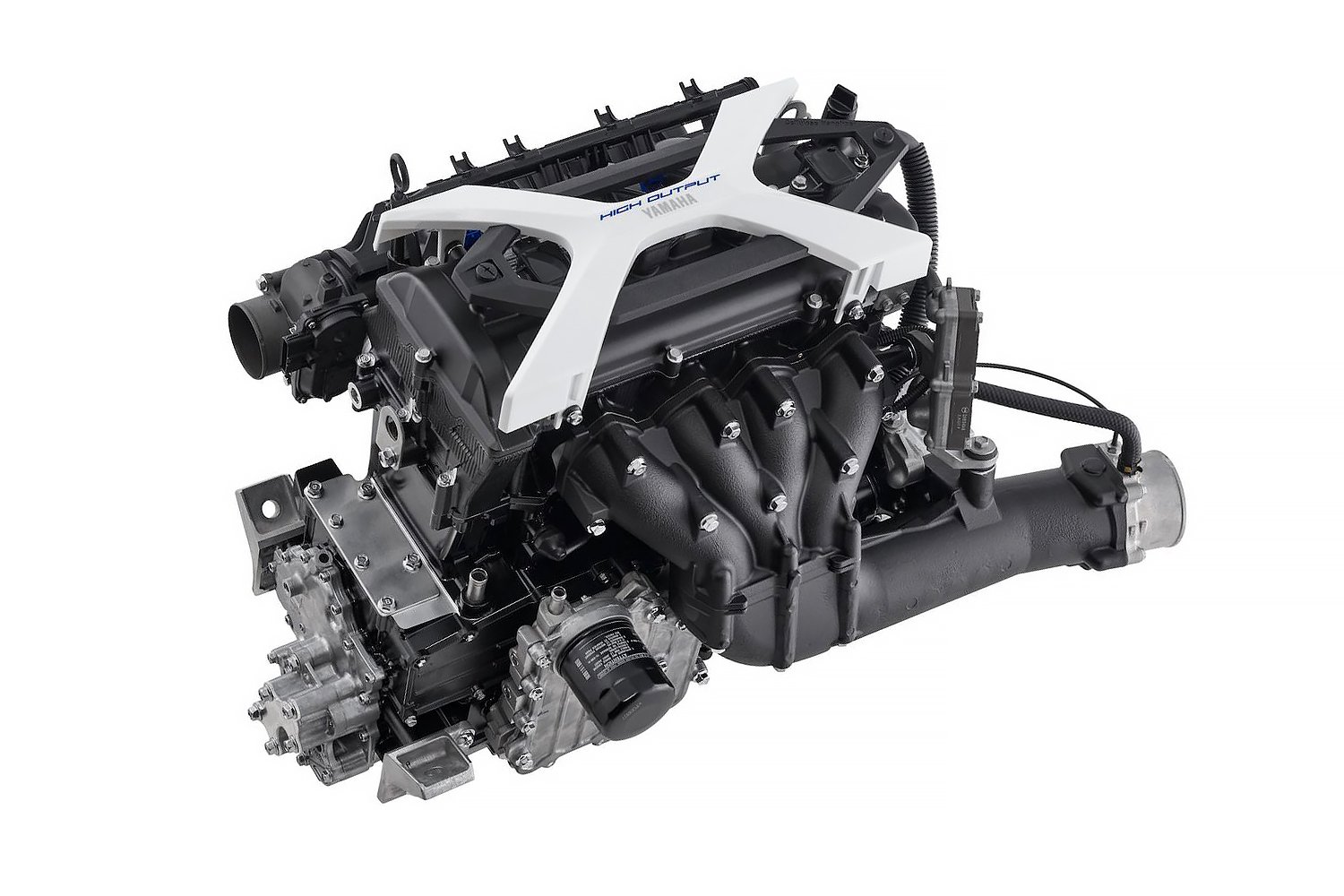 For some people, building engines is second nature and it comes easy for them: disassemble it, dip it, clean it, add new bearings, cam, pistons, rings, manifold, re-do the valves and heads, add a carb, or carbs, or injection, headers, spray some paint on it and put it back in the vehicle…easy, correct?
For some people, building engines is second nature and it comes easy for them: disassemble it, dip it, clean it, add new bearings, cam, pistons, rings, manifold, re-do the valves and heads, add a carb, or carbs, or injection, headers, spray some paint on it and put it back in the vehicle…easy, correct?
That’s the accepted way to build an engine but what if you don’t have an engine to start with? What if you want to build a wicked fuel injected Ardun-headed flathead that’s 70 years old and you don’t have the pieces to start?
Ron Leslie, President of Kenz and Leslie, and a good friend to many lent an original Ardun head to Ron Bement; our story’s focus. He proceeded to measure it, then convert it to 1/3 scale and build from there. But, we’re getting ahead of chronological order.
The venerable Ardun, rendered in 1/3 scale, a 5,000 hour build.
Three of Ron's four micro engines. Left to Right: the Challenger kit engine, the Offenhauser, and the newest, a 4-port Riley.
Ron Bement is master machinist and also a member of The Colorado Model Engineering Society (CMES). These days he is best known for his operating 1/3 scale and 1/4 scale engines. All of his engines are machined on a Bridgeport, a state-of-the-art Fadal CNC machine, a CNC lathe, and an EDM (electrical discharge machine). Before he got interested in mini engines, he ran his own company; RB Enterprises, started in 1965.
I remembered those Offenhauser engines in midget race cars that ran at Lakeside Speedway during the 1950’s. I loved the sound of them and decided an Offenhauser might be a fun build.
“When I retired, I needed something to do,” Ron said. “My friends told me to not sit in front of the television. I read an article about miniature engines and decided I might be able to build one, so I ordered up the blueprints for a “Challenger” engine kit.” It took Ron a while to get past the $850.00 price and he wasn’t certain he’d enjoy building a kit. “The block casting was rough but I started on it. It took a year and half to make all the other needed parts for the Challenger kit but the block was junk so I abandoned it,” Ron added.
“I’d gotten enough experience building small parts so I moved on to building an Offy engine first. After the Offy was finished the guy I bought the kit from sent me a new block.” Ron continued, “The Offenhauser was actually the first engine I completed and got running. I remembered those Offenhauser engines in midget race cars that ran at Lakeside Speedway during the 1950’s. I loved the sound of them and decided an Offenhauser might be a fun build.”
Ron acquired blue prints of the engine from the Harry Miller archives and he also has books and articles on the history and how it became known as an Offenhauser engine. “That engine took four years, I’m slow!” Ron said, “but when I fired it up I was definitely hooked on building mini engines.”
Just a few of the myriad of machined parts needed for a 1/3 scale build. Note the size of the valves, done in Meonite, a fine grade of cast iron and the piston size compared to the dime next to it.
After the Offenhauser build, Ron decided he wanted to build the remarkable Ardun engine. He talked a friend out of his genuine 59AB Ford bare-block. It took 4 months to measure the block and enter that information into the computer program. Same with very special valve covers – once entered into the computer, the CNC turned out one Ardun valve cover in sixty-five hours.
One thing you might notice on the Ardun engine is the fuel injection. Yes, it works quite well, after all, in the photos, everything you see there is machined by Ron, including the radiator and yes, the engines actually run anti-freeze through them. The only exception is the ‘store-bought’ spark plugs and plug wires. He even built the clear magneto you see on the Ardun.
Ron has always been into cars. Before he opened his business, he was into drag racing in the early 1960s. He ran an ‘A’ Fuel dragster with a couple of friends and formed a partnership with Mark Williams to build aluminum bodies for dragsters. In 1982 Ron’s wife encouraged him to order a full size ‘glass Deuce body and set to work on that.
Not one to let small details in a build slip by, Ron invented, built, and perfected the ‘thru the frame’ brake line fittings, which he should have patented because the minute his Deuce hit the shows, his ‘thru the frame’ fittings were knocked off so many times he could have made a fortune. Ron also machined, out of stainless steel, a combination headlight/shock bracket with turn signal lenses built-in and stainless fasteners.
“It took seven years to build that car.” Ron stated. “But I drove it everywhere over the course of the 22 years.” He sold the car in 2004 to Phil Larocco and he in turn sold it to another friend living in the Black Forest area south of Denver. Unfortunately, the new owner’s home burned along with many others in that devastating Black Forest fire of 2013, but fortunately, the roadster survived in a detached garage.
Do the miniature engines run? Of course they do, that’s the beauty of spending so much time machining all the parts, they operate just like a “real” engine. Of course, the open exhaust (headers) give the miniature engines a sound of their own and the Ardun is capable of 10,000 RPM. Matter of fact, the Ardun-headed flathead took well over five thousand hours to complete. Consider this: at a very modest hourly rate of twenty dollars an hour, that’s a one hundred thousand dollar flathead. Worth it?
It is to Ron. It’s his hobby, it’s what he devotes all those hours to, and he enjoys every second of it–especially when he hooks up the batteries, fires it up, and watches spectator’s eyes light up in total wonderment as he gooses the throttle on his engines.
“How’d he do that?” is the normal question everyone asks. Second is, “How many hours did it take to build that?” Ron delights in answering any and all questions posed and attends as many indoor/outdoor events as he can.
// < 




























